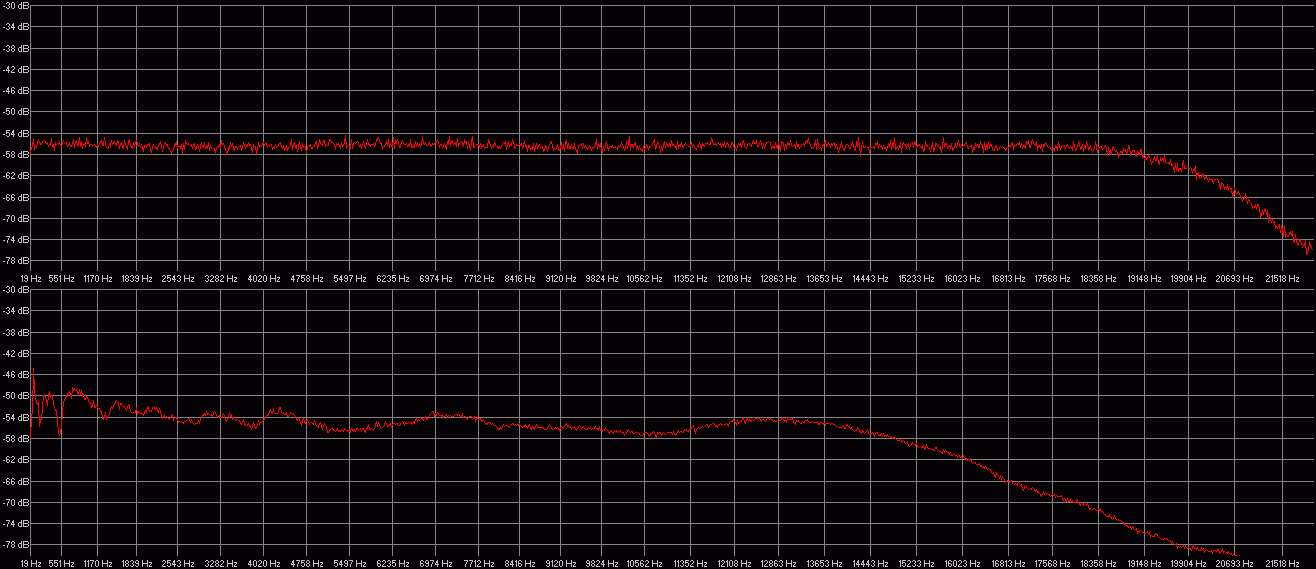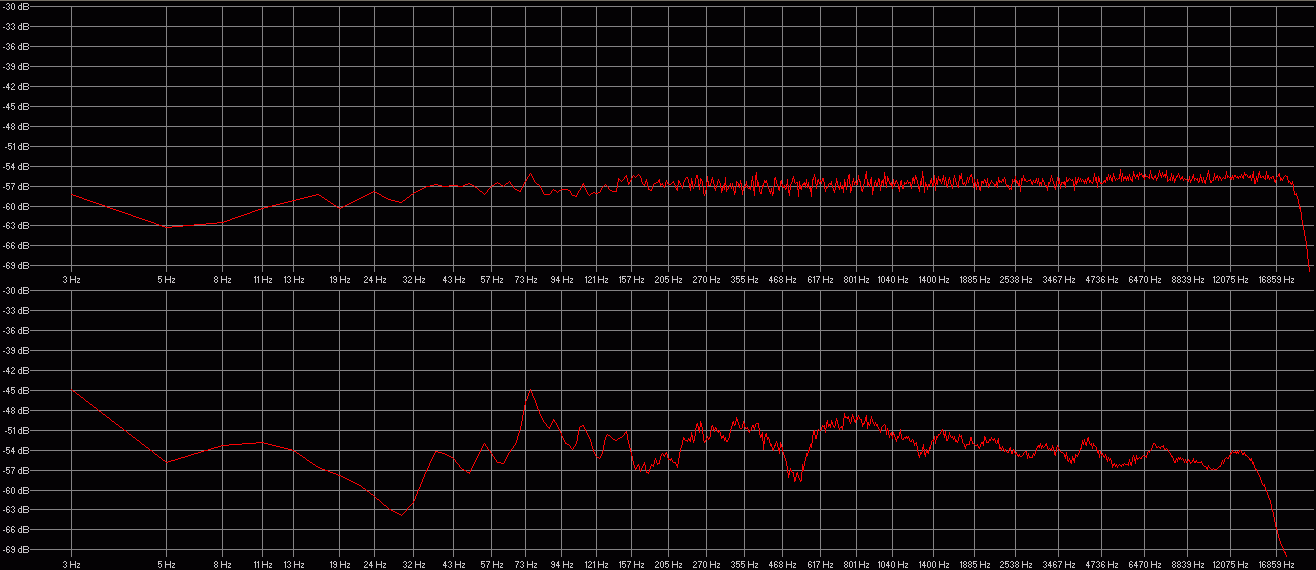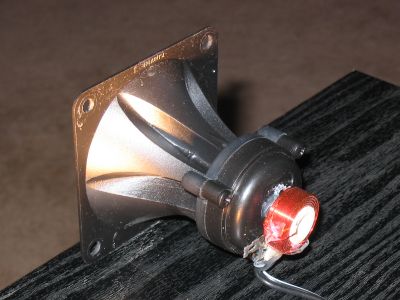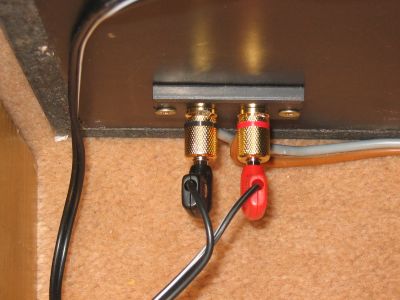Since I found out that I can hear frequencies up to 18 kHz, the low
performance of my speakers in that range had to be improved. I bought a
Piezo Tweeter with 94dB sensitivity and a more or less linear response
in the range between 16kHz and 20 kHz. The tweeter is hooked up
parallel to the whole speaker, and coupled over a 2nd order 15 kHz high
pass filter (capacitor in series, and a coil parallel to the tweeter).
The response of the filtered tweeter is 15kHz-20kHz. Since I was
working on it anyway, I also fitted some nice terminals, to connect the
speakers to the amplifier. Here are the
results:
Response of the modified speakers,
extended with
the new piezo tweeter (linear scale) (white curve: recording of white
noise, red curve: recording of silence and ambient noise)
The high freqency response is now almost flat up to 19kHz, which is
higher than I can hear.
The THD of the system is around 1% at 100Hz, 0.2-0.5% up to 5kHz, and 0.03% at 10kHz.

Response of both speakers, with the
new tweeters (log scale) and subwoofer, this time for pink noise. Pink noise is low-pass filtered white noise with a 3db/octave slope. The test signal is indicated by the pink curve.
The white curve is the recording with no
output through
the speakers, as a reference.
It is also nicely visible, how the subwoofer extends the low frequency response down to 20 Hz and below. Unfortunately most rooms have pretty nasty effects on the low frequency response. The 70 Hz peak could be removed by placing the subwoofer further away from the main speaker (not shown).
I'll have to build a subwoofer equaliser some day...
Updated August 2006:
I measured my system in my new room - the results look totally different again!

This plot show recorded white noise (ca. 10 seconds), recorded with a microphone at the listening position (slightly moving left and right to cancel phase effects). The system consists of both Orbid Sound Speakers, with the new tweeters fitted, and two subwoofers running in series from a 85 Watt RMS monoblock. The subwoofers are sealed enclosures (Drivers: 1x 30cm, and 2x 25cm), electronically extended to 16 Hz.
It is visible that the prominent dip at 550 Hz in the older plots is less pronounced - but now there is a dip at 200 Hz. Talk about the room being the worst component of most people's audio system...
The good news is that the big peak at 70 Hz is completely gone. My new room is a lot smaller (3x3 Meters), and has a large opening in one wall. The front corners are stuffed with pillows, and the front wall has a large screen with fleece backing, in front of a window cavity. I think this acts somewhat as a bass absorber. Now there is something to think about next time you're planning to spend heaps of money to improve your sound - maybe it's just the room?







